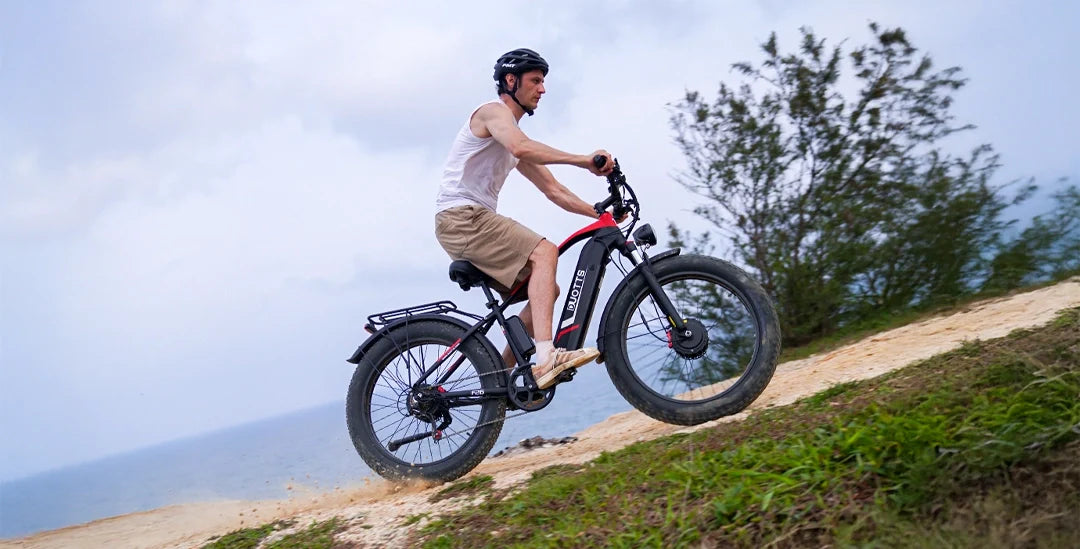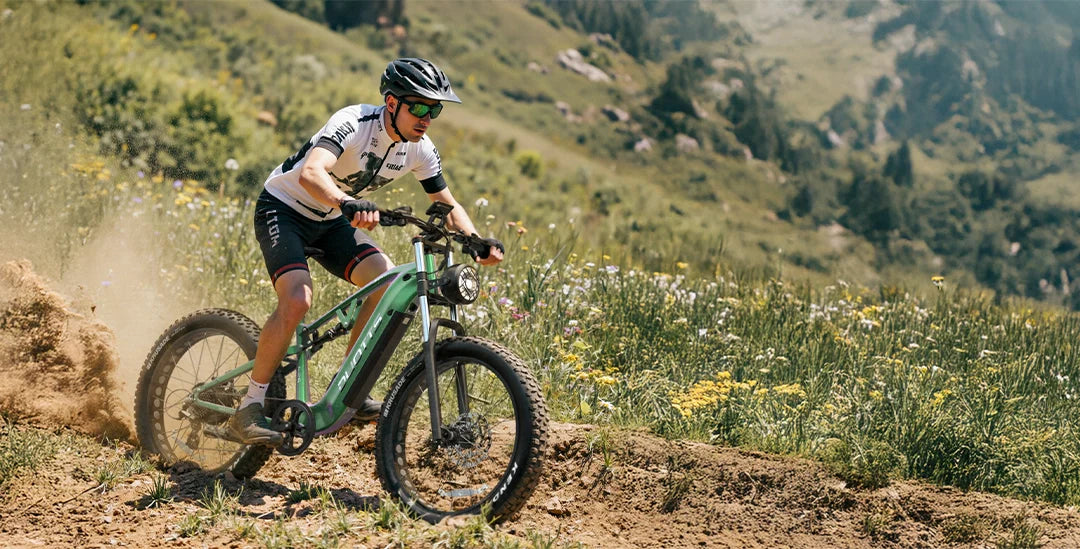Uphill riding is one of the most physically demanding aspects of traditional cycling. As the gradient increases, so does the effort required to pedal, which can quickly drain your energy and impact the overall riding experience.
Electric bikes, however, offer a much easier and more efficient way to conquer hills. With the support of an electric assist system, you can significantly reduce the physical strain, extend your riding range, and enjoy a smoother, more sustainable journey.
This article will walk you through how to tackle uphill rides effortlessly with an electric bike, and provide you with key preparation tips and riding strategies.
How Do Electric Bikes Help with Uphill Riding?
Electric bikes use an integrated motor system—consisting of the motor, battery, controller, and sensors—to assist riders while pedaling. Once you begin to pedal, the sensors detect your movement and send signals to the controller, which then calculates the required level of assistance based on your pedal force or cadence. The motor provides the appropriate power output, reducing your workload—especially helpful on steep inclines.
The Role of Motor Power and Torque
The motor is a major factor in determining whether your e-bike can handle hills effectively. Motor power, measured in watts (W), is a function of voltage and current. The higher the wattage, the more sustained power the motor can deliver.
But torque is equally critical. Measured in Newton-meters (N·m), torque represents the rotational force applied by the motor to the wheels. The higher the torque, the better the bike can accelerate from a stop or handle steep gradients. Most electric bikes offer torque ratings between 40 and 100 N·m—the higher the torque, the stronger the climbing ability.
Battery Capacity and Range
Battery capacity determines how far you can ride before needing a recharge. Depending on the battery specs and the assist mode used, typical range per charge varies from 40 to 120 km (affected by factors like temperature, terrain, and rider weight).
Note that using high assist levels or throttle-only mode drains the battery more quickly. Throttle mode, in particular, consumes the most energy since the motor does all the work. Unless necessary—such as for a final push on a steep climb—it's best to rely on pedal assist to save power and maximize range.
What to Prepare Before an Uphill Ride
Preparation is key to a smooth and safe uphill ride. Be sure to:
- Fully charge your battery before departure.
- Choose the right assist level based on the slope (levels 1–2 for gentle hills, 3–5 for steeper ones).
- Avoid excessive use of throttle mid-climb.
- Accelerate on flat terrain before approaching the hill to build momentum.
These tips help conserve energy and extend your battery life during climbs.
What Gearing Should You Use When Climbing?
Electric bikes use mechanical gear systems similar to traditional bicycles. When combined with motor assistance, proper gear selection greatly improves efficiency:
- For steep hills:
Use a low gear (large rear cog, small front chainring) to reduce pedal resistance. Pair this with a high assist level to maximize torque.
Tip: Shift early—changing gears mid-hill can cause chain drops or strain the motor.
- On flat or downhill sections:
Use a high gear (small rear cog, large front chainring) to maintain speed. Lower the assist level to conserve energy while keeping a steady cadence (ideally 60–90 RPM).
Note: On descents, high gears can limit over-revving but braking should be used to control speed.
What’s the Steepest Gradient an E-Bike Can Climb?
An electric bike’s uphill capability depends on several factors:
- Motor performance: High-torque motors handle steep inclines more easily.
- Total weight: The heavier the rider or cargo, the more power is needed.
- Rider fitness: Even with assistance, some pedaling is required. Better fitness improves efficiency and reduces battery reliance.
Techniques to Improve Uphill Performance
In addition to having the right e-bike, riding techniques can greatly affect your uphill performance:
- Choose the right gear: Use low gears for steep climbs, higher ones for mild slopes. For training purposes, you can briefly turn off assist.
- Lean forward: Shift your weight slightly forward to improve front wheel traction and maintain balance.
- Maintain a steady cadence: Avoid sudden bursts or stops. Smooth, consistent pedaling helps conserve energy and build momentum.
Safety and Energy-Saving Tips for Climbing
Safety is crucial, especially on energy-intensive hills. Follow these recommendations for a safer and more efficient uphill ride:
- Maintain deep, steady breathing to support oxygen flow.
- Stay alert to traffic and surrounding conditions.
- Take breaks when needed and stay hydrated.
- Watch for obstacles like potholes or debris.
- Balance your load—uneven weight can cause instability.
Uphill cycling can be a tough challenge, but with an electric bike, it's much more manageable. From powerful motors to adjustable assist modes, e-bikes help you conquer slopes with confidence.
At Duotts, we’re committed to delivering powerful and intelligent electric bikes. Whether you're climbing urban hills or tackling rugged mountain trails, our e-bikes are built to be your trusted companion.
Ready to elevate your riding experience? Explore Duotts' electric bike lineup and start your smooth uphill journey today!






















Lascia un commento
Tutti i commenti sono moderati prima di essere pubblicati.
Questo sito è protetto da hCaptcha e applica le Norme sulla privacy e i Termini di servizio di hCaptcha.